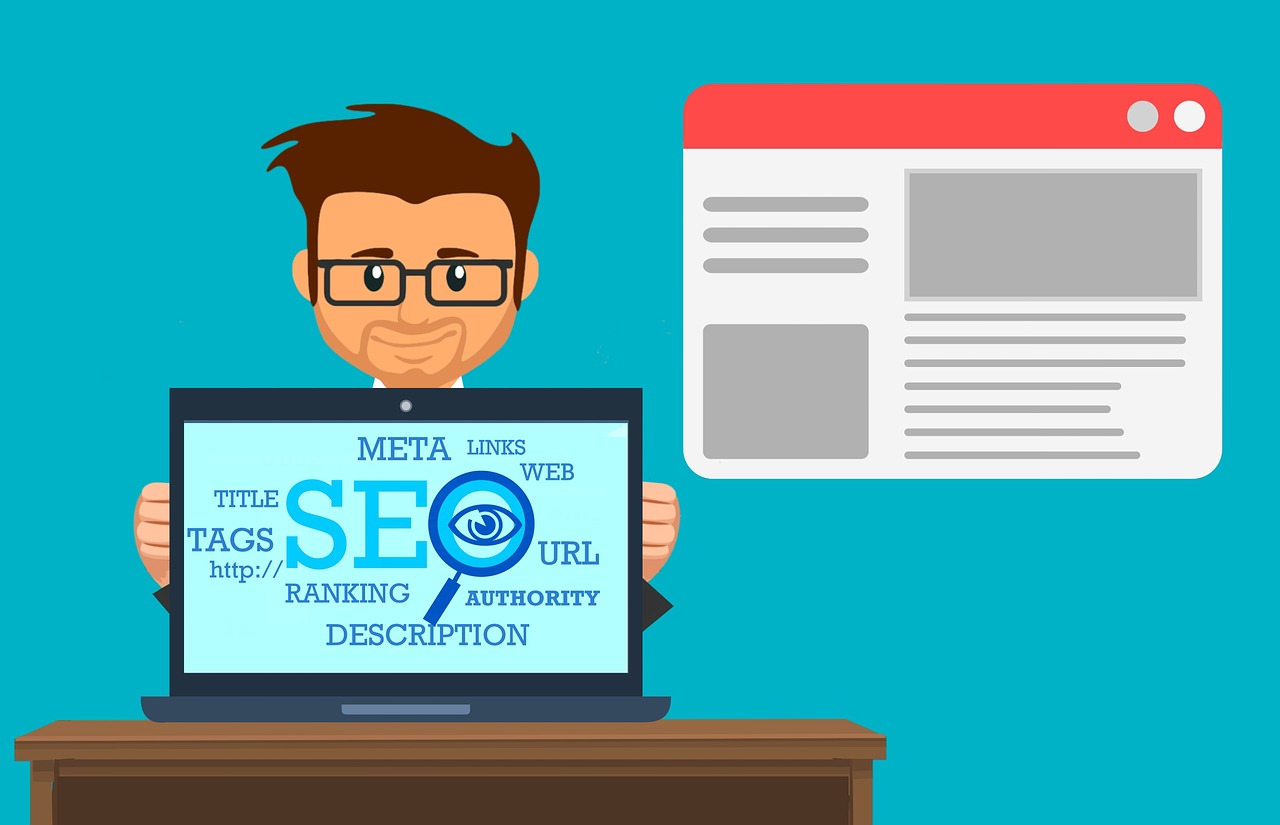
For the most part, on-page SEO practices have stayed the same over the years.
Advancements in natural language processing (NLP) and machine learning (ML) have recently assisted Google in enhancing its understanding of web content and user search intent.
Even for newer websites with less authority and reputation, on-page SEO has become a more effective method to convey quality signals and generate organic search clicks.
However, on-page SEO requires more time due to changes in Google’s crawling process. The search engine no longer focuses solely on a single keyword on a page; it now evaluates a webpage’s originality, insightfulness, depth, and author expertise.
If you want to achieve ranking success, it is necessary to devote more time and effort to effective on-page SEO. Below is a breakdown of how optimizing on-page elements can have the greatest impact on your website.
What is on-page SEO?
On-page SEO is a method of refining website pages with the aim of achieving higher rankings on search engine results pages (SERPs) for particular keywords. It is highly favored by site owners as it grants them full authority over their site content, making it an excellent SEO strategy.
Why is on-page SEO important?
On-page SEO has the advantage of enabling Google to perceive your content as pertinent and of good quality, leading to more frequent promotion in the SERPs.
On-page SEO helps boost your overall digital marketing endeavors, resulting in:
- Higher organic clicks
- More web pages crawled and indexed by search engines
- Improved conversion rates
- Higher-quality content
- Better user experience
- Long-term value
- And more!
On-page SEO basics
To begin earning organic impressions and clicks, it is essential for you to first master the fundamentals. On-page optimization specifically targets a page’s content and the unseen metadata that Google crawlers use to comprehend online content.
High-quality content and Google’s E-A-T
Google’s goal is to display to users the original content of the highest quality.
However, what criteria determine a webpage’s quality?
“Google’s E.A.T”, also known as expertise, authority, and trustworthiness, is defined in Google’s Quality Rater Guidelines as the criteria by which its web crawlers assess quality.
E.A.T. can be considered as a guiding principle, although it is not officially considered as a ranking factor.
Google ranks web pages that display E.A.T. through qualities, such as:
- Original, insightful analysis
- Expert authorship and sourcing
- Relevant external links to other trustworthy websites
- Inlinks (or backlinks) from other high-quality websites
- High-quality page experience
When considering your SEO efforts, you can view E.A.T as a guiding principle. It is important for your website to demonstrate knowledge and proficiency in a particular subject or topic (on-page SEO), establish credibility through backlinks (off-page SEO), and consequently signal to search engine crawlers that it is a reliable and valuable resource deserving of higher placement in the search engine results pages (SERPs).
Satisfying search intent
In order to achieve a high search engine ranking for relevant keywords, the content on your webpage must also meet the search intent of your target audience, who are looking for products and services similar to yours.
With the emergence of NLP, it is increasingly crucial to emphasize that algorithm updates such as Hummingbird, RankBrain, BERT, and MUM have played a significant role in enhancing Google’s comprehension of search intent.
Search intent can be divided into four primary types:
- Navigational: Users looking for a specific website or web page.
- Informational: Users looking for more information or answers to their questions.
- Transactional: Users looking to make a purchase.
- Commercial: Visitors who may not be ready to purchase but are researching with the intent to make a purchase.
When creating content, make sure it aligns with the search intent of the target keyword. In other words, if the keyword is informational, Google is more inclined to rank how-to guides or resource pages. On the other hand, if the keyword is transactional, Google is more inclined to rank product or services pages.
No matter how many times you include the keyword on the page, your web content won’t rank if it doesn’t satisfy the search intent.
How to do on-page SEO
When considering Google’s ranking system, it is crucial to remember that web pages are ranked individually and not entire websites. Therefore, on-page SEO must be applied to each landing page on your website in order to improve its position in search results.
You should follow SEO best practices because they are important. To help you begin, here are a few on-page best practices.
Do your keyword research
The process of keyword research involves identifying relevant keywords in your industry that link your business to your target audience. Each page on your website has the chance to rank for relevant keywords or a group of keywords. Certain keywords hold more value than others as they attract qualified traffic.
What are the steps for determining the value of a keyword? The key metrics to consider when evaluating keywords are:
- Search volume: The number of monthly searches a keyword receives.
- Cost-per-click (CPC): The price advertisers are willing to pay to show up for a keyword in paid search. Higher CPC keywords represent qualified audiences with stronger conversion potential.
- Keyword Difficulty: Some keywords are more competitive than others. Newer websites with less Domain Authority struggle to rank for queries with high Keyword Difficulty, regardless of how high-quality or optimized their content is.
You can utilize a keyword research tool to obtain crucial metrics and compile a list of keywords that you desire your web pages to achieve a high ranking for.
Create SEO-friendly URL structures
To begin optimizing your web page for your desired keyword, start with the URL. Ensure that your URL contains the primary keyword target, so that both Google and users can quickly understand the topic of the content.
When users see your SERP result in the search engine results page, they can also see the URL associated with it, and this can impact their decision to click on it.
Optimize your meta tags
The SERPs display the page title and meta description to users.
Google occasionally modifies page titles and meta descriptions. However, this occurs only in 20% of cases and is less likely to happen if meta tags are effectively optimized.
To enhance the ranking potential of these web page elements, it is important to think step by step.
- Follow best practices with length; no more than 50-60 characters for title tags and 120 for meta descriptions.
- Include your keywords or variations to signal stronger relevance.
- Be accurate, descriptive, and entice the user to click. Google looks at your content’s click-through rates (CTRs) to understand if users find it relevant and valuable.
Follow SEO copywriting best practices
When it comes to content optimization, the way you write content plays a vital role as Google not only crawls all the text on your web pages but also indexes passages within them for ranking in search results.
Here are a few tips for SEO copywriting:
- Write readable content and avoid grammatical errors, keyword stuffing, and technical jargon to keep it accessible.
- Use headings and subheadings to organize your content. Add keyword variations to improve the relevance and explore common subtopics to signal greater topical depth and comprehensiveness to Google crawlers.
- Make your content “scannable,” making it easier for users to skim and get the major points or easily find the answer to their questions. Adding features like jump links to enhance the page experience.
- Aim for in-depth content that is longer or as long as the top-ranking content for your target keyword. Longer content performs better in the SERPs.
Optimize your images and alt text
Google prefers content that includes rich media, however, the images on our web pages are not visible to Google crawlers.
Add internal and external links
Google also considers the links on your webpage to comprehend the relevance and credibility of your content. In terms of credibility, Google ensures that your content does not engage in dishonest linking methods.
- Link to authoritative, relevant sources so Google can see you’re doing business with other reputable sites.
- Internal links help Google crawlers find and index all pages on your site. If no links point to the page, Google won’t find it.
- Use anchor text that accurately describes the content of each target. This helps both web crawlers and users.
Internal links also help to distribute PageRank throughout your website. Since the homepage holds the majority of PageRank, be sure to include links to important categories or service-related pages in the navigation menu or footer.
OTHER KEY FACTORS
Create a List of Keywords
Typically, performing keyword research is the initial step in implementing a credible SEO strategy.
What is one of the most effective ways to discover the keywords that are searched for by your desired audience?
Retaining the same meaning, please rephrase the given text step by step without adding or removing any information. Google Suggest.
If you begin typing a keyword into Google’s search field, it will generate a list of suggestions.
These keywords are often excellent for SEO as they are directly sourced from Google.
This implies that people are actively seeking them out.
Furthermore, “long tail keywords” are typically less competitive compared to “short tail” terms.
Although long tails have lower search volume levels, they are easier to rank for.
One suggestion I have is to enter several keywords into Google and repeat this process until you have compiled approximately 10 keywords.
To check the search volume and competition levels for those terms, you can utilize a keyword tool such as Semrush or Ubersuggest.
Analyze Google’s First Page
Alright, you have come across a few keywords.
It is now the time to determine which websites are currently ranking for those keywords.
To accomplish this, simply input one of the keywords discovered into Google.
If you were planning to include that subject on your website, it would be important to mention that the majority of the top search results consist of list posts.
If you were to consider it logically, you would likely desire to display a list post on your blog.
Create Something Different or Better
It is now time to generate content of extremely high quality.
When it comes to SEO content, there are two options available to you.
Option #1: It is possible for you to produce something that is not the same.
You have the option to generate something superior.
At times, there is a desire to produce something larger and superior to the existing offerings.
However, there are occasions when it is more advantageous to have content that is entirely dissimilar.
Why should you rephrase the text below while maintaining the same meaning, thinking step by step? The main reason is to ensure clarity and accuracy in communication. By going through the process of rephrasing, you can identify any potential ambiguities or inconsistencies in the original text. Additionally, rephrasing helps improve understanding, as it prompts you to think critically about the content and structure of the text. It allows you to break down complex ideas into simpler terms, making the information more accessible to different audiences. Overall, rephrasing encourages precision in language and enhances effective communication.
Because it aids in making your content distinctive, thinking step by step is essential.




